This November (2025) B.P.C. Publishing is pleased to release our latest paperback/ebook,
!839: The Chartist Insurrection and the Newport Rising.
David Black and Chris Ford
(with foreword by John McDonnell M.P. and appendices by George Julian Harney and Edward Aveling). 340 pp. £9.99. ISBN 979-8270579333
This is a revised and re-edited edition of our book 1839: The Chartist Insurrection, which was published in 2012 by Unkant.
The historical narrative presents a history of the Chartist Insurrection of 1839, from the launching of People’s Charter Campaign for universal male suffrage in late-1838 to the Newport Rising in November 1839 and the ensuing campaign to save John Frost and co-leaders of the Rising from execution.
The story is told through reference to primary as well as secondary sources: the Chartist and radical press of the time, intelligence reports, and military/government correspondence.
John McDonnell’s words in the foreword still ring true, perhaps even more so today.
“Decade after decade of Labour movement historiography has overlaid the Chartist story with the concept of an overwhelmingly conservative British working class and a solely reformist British Labour movement. The message has been consistently drilled into us that revolution was and is futile. This book offers another perspective. Revolution in Britain in 1839 was closer than we have been previously taught. There is nothing inherently conservative in the British working class, as generation after generation have mobilised to prove. What may be missing, however, is the learning of the lessons of each revolt and each mobilisation for change. By challenging the prevailing hegemony relating to the events and significance of 1839, this book assists us greatly in understanding the potential for future challenges to the system.”
Kindle edition:
Paperback Edition: https://www.amazon.co.uk/dp/B0FWZNBZSS
And All Good Libraries (by arrangement with PublishDrive)
REVIEWS OF THE FIRST EDITION
Ben Watson’s blurb-on-the-back: ‘In retrieving the suppressed history of the Chartist Insurrection, David Black and Chris Ford have produced a revolutionary handbook.’
Dan La Botz, New Politics
Black and Ford have written a fast-paced, narrative history of the 1839 Insurrection, filled with thumbnail sketches of the Chartist movement’s major figures, descriptions of the most important Chartist organizations and their politics in brief, excerpts from contemporary speeches, and parliamentary debates, and wonderful descriptions of the movement’s rise, growth, and spread throughout Britain. All of this is based on the most masterful command of the sources: newspapers, parliamentary records, memoirs, private papers, and all of the secondary literature. They tell their story in the most straightforward way but at a breathtaking clip that contributes to the sense of the excitement of the movement and its culmination in the insurrection.”
Stephen Roberts, People’s Charter
I read this book in one sitting as I sheltered from the pouring rain at Bodnant Gardens in North Wales. Based on a wide range of secondary sources and easy to read, it provided a welcome way of spending a few hours whilst waiting for the weather to clear (it didn’t!). The authors tell the story of a year when they assert the conditions for a working class revolution existed… For the authors a hero of the Chartist story emerges… George Julian Harney. And rightly so: Harney should be a hero to us all.
Sharon Borthwick, Unkant Blog
This was an exciting time… Dave Black and Chris Ford bring this time alive with this thoroughly researched book which includes many first hand accounts of meetings, battles and the colourful protagonists, many of who fully supported ‘ulterior measures’ in other words arming themselves, should parliament reject the petition for universal male suffrage which really they knew was a foregone conclusion…
James Heartfield, Spiked Online
David Black and Chris Ford’s account of the Chartist uprising of 1839 is also written in part to save these agitators from the condescending judgement of an Althusserian, in this case Gareth Stedman Jones, whose ‘fear of agency’ cannot recognise Chartism’s self-conscious attempt to overthrow ‘old Corruption’… Black and Ford make a good case that, though the technology they worked with was not for the most part industrial, the core of the Chartist movement was much more than an outgrowth of radicalism… Black and Ford do not flatter the Chartists unduly, nor make them into cartoon heroes. All the weaknesses of the organisation are confronted here.
Adam Buick, Socialist Standard
1839 –The Chartist Insurrection, is a compelling read, telling the story of Chartism through the experiences of George Julian Harney and other ‘firebrand’ Chartist leaders such as Dr. John Taylor and examining the ill-fated Newport Rising of 1839. The authors provide a vivid account of the revolutionary potential that had built up in Britain by the late 1830s, culminating in the aborted rising at Newport.
For the complete B.P.C. Publishing Catalogue see HERE




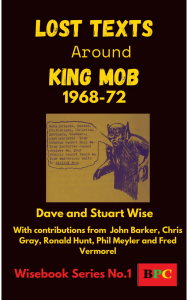 Lost Texts Around King Mob, by Dave and Stuart Wise. with contributions from John Barker, Chris Gray, Ronald Hunt, Phil Meyler and Fred Vermorel
Lost Texts Around King Mob, by Dave and Stuart Wise. with contributions from John Barker, Chris Gray, Ronald Hunt, Phil Meyler and Fred Vermorel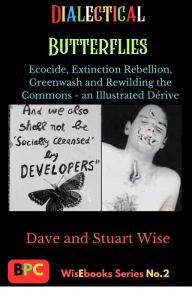 Dialectical Butterflies: Ecocide, Extinction Rebellion, Green and Rewilding the Commons – an Illustrated Derive, by Dave and Stuart Wise.
Dialectical Butterflies: Ecocide, Extinction Rebellion, Green and Rewilding the Commons – an Illustrated Derive, by Dave and Stuart Wise.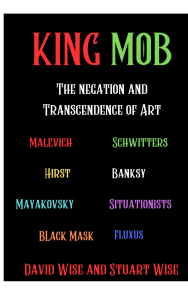 King Mob: the Negation and Transcendence of Art, by Dave and Stuart Wise
King Mob: the Negation and Transcendence of Art, by Dave and Stuart Wise A Newcastle Dunciad: Memories of Music and Recuperation, by Dave and Stuart Wise
A Newcastle Dunciad: Memories of Music and Recuperation, by Dave and Stuart Wise Building For Babylon: Construction, Collectives and Craic, by Dave and Stuart Wise
Building For Babylon: Construction, Collectives and Craic, by Dave and Stuart Wise Red Chartist: Complete Annotated Writings, and her Translation of the Communist Manifesto, by Helen Macfarlane
Red Chartist: Complete Annotated Writings, and her Translation of the Communist Manifesto, by Helen Macfarlane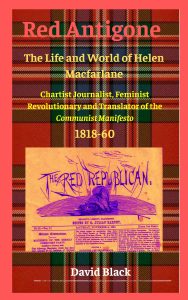 Red Antigone: The Life and World of Helen Macfarlane 1818-60, by David Black
Red Antigone: The Life and World of Helen Macfarlane 1818-60, by David Black Psychedelic Tricksters: A True Secret History of LSD, by David Black
Psychedelic Tricksters: A True Secret History of LSD, by David Black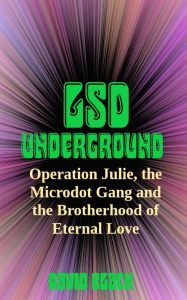 LSD Underground: Operation Julie, the Microdot Gang and the Brotherhood of Eternal Love, by David Black
LSD Underground: Operation Julie, the Microdot Gang and the Brotherhood of Eternal Love, by David Black